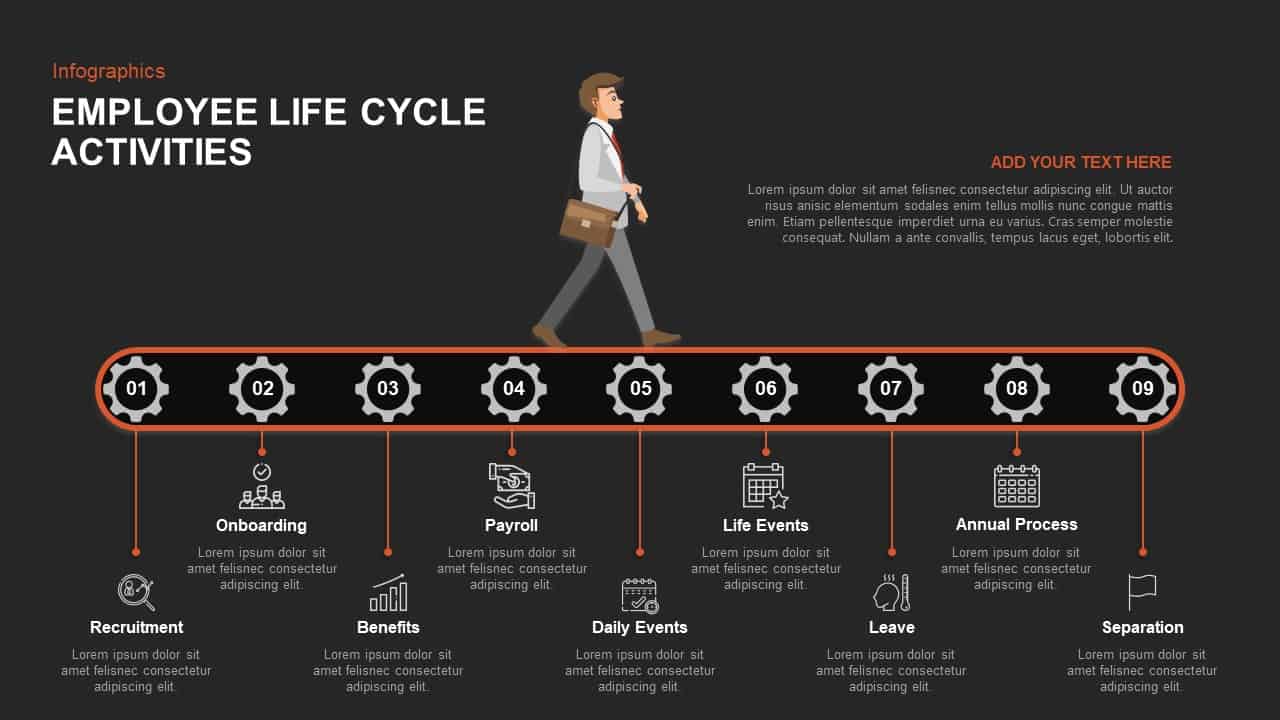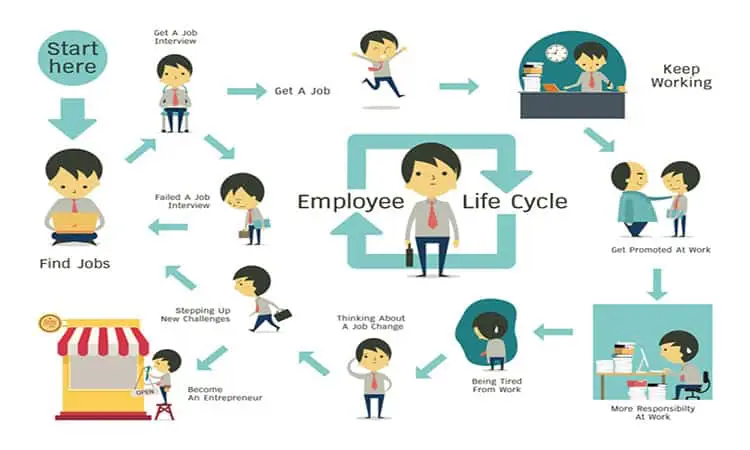Employees are the backbone of organizations. So, employees deserve fair treatment throughout their life cycle. Organizational growth and development depend on employee’s skills and commitment. They are executing management decisions and lead the company to the right end. Human resource management encompasses the Employee Life Cycle Management in an organization. The HR department plays a major role in facilitating the employee life cycle process.
The term employee life cycle refers to an employee’s journey with the company. In this journey, every employee is passing through certain stages; this life cycle management is related to core HR responsibilities. Valuing strong lifecycle management at your company is key to attracting and retaining top talent and supporting the company’s bottom line. The HR department has the role of enabling the entire process and ensuring that the transition into each stage is well defined and structured. However, in the dynamic business scenario and economy, each stage of the employee life process has assumed greater significance.
As said earlier, HR personnel’s should handle employees in a judicious way. If they are failed to treat judiciously, the organization’s progression will be on the threat. For instance, business decisions of management haven’t be applied in the market by the employees and the business plans would end in disaster. So, the HR department of the company carefully manages the employee’s life cycle from its initiation.
Stages in employee lifecycle management

Employee life cycle management defined as the processes, tool, and management structures that support the total experience of the employee at their company, from beginning to end. The cycle passages through various stages in between the recruitment and exit process. In the current scenario, each stage of the employee lifecycle management has gained critical significance. The procedure has evolved over a period of time to become one the strategic tool for the organization to manage the human capital. This human capital investment is the most crucial thing, which determines the success of the company. Let’s go into little more detail about each of these stages, and describe what they mean.
Recruitment
Employee life cycle process starts with the recruitment process. Recruitment is a process of hiring a person in an organization to perform a specific role. The recruiting process understands to meet the specific human capital requirement in the company. Recruitment involves various steps such as identifying the nature of the vacancy, creating a job description, job profile, hunting of talent, shortlisting, selection of the candidate.
Formerly, the hiring was primarily concerned with the closing of any opening in the organization. However, the scenario has changed and now it is very important to hire the right talent for the organization. Recruitment Team/Recruiters have to ensure that they not only hire a person who is capable of performing the assigned duty but also have the ability to embrace the Company culture and practices.
Thus, Job-Fit hires tend to stick with the organization for a longer period thereby reducing the turnover cost for an organization.
Employee Integration
Once an employee joins, HR has to receive the individual in the company fold. Post onboarding, Human Resource Management needs to impart key training to the individual related to the job profile. They also need to identify the training programs aimed at the development of the core competency skills of an Individual. Training and Development are aimed at the association of skills and expertise to meet Organizational aims.
Human resource management has the task to ensure that the Individual is completely conscious of the organizational policies and expectations from him/her as an employee. This is essential for an organization to achieve its goals and provide career growth opportunity to the employee.
Performance Management
One of the most serious parts of managing the Employee Life Cycle is the Performance Evaluation. Performance Measurement is no longer controlled to be an annual exercise; rather it is a continuing process in the organization. This would help the Employee as well as the Manager to assess the performance better on a regular basis, identify the gaps and look at possibilities to address the same.
Career Planning
Performance indices help to evaluate the performance of the Employees. However, without a suitable Career Planning, it would be difficult to retain the Key Performers in the organization. Human Resource Management (HRM) must have a structured Career Progression System to monitor the career growth of the Employees in the organization.
Career Succession Plan provides a structured roadmap to the employees and helps them understand their roles better.
Retention
The biggest challenge is to retain high performers or skilled employees in the organization. Opponents or similar business enterprises always target such employees with lucrative offers. Thus, the Talent Management team has to find out new platforms, ideas which are crucial to retaining key talents in the organization.
The approach has to take into consideration the policies adopted by the competitors before devising a Retention Plan.
The approach has to take into consideration the policies adopted by the competitors before devising a Retention Plan.
Offboarding/ retirement
Employees may exit an organization on retirement, or for better openings, compensation, or for any other personal reason. Employee Life Cycle Process comprises activities related to the conclusion of exit formalities. Completing release formalities, conducting an exit interview may be a standard procedure. However, the actual task post completion of the Exit formalities is to analyze the Exit Interview response in order to identify gaps in the organizational practices.
Expect any more potential exits in the near future and take sufficient steps to hold such key talents.
Rebound
Retired employees may have left the organization, but keeping in touch with such employees is always positive. It may happen that they have learned new skills, know-how which may be required on an urgent basis in the organization. Thus good relationship will ease consultation and help in getting them on board again.
Employee Life Cycle Management has evolved as a Planned HR Tool which includes multiple subsets. Employee Life Cycle Management includes the entire Human Resource Management (HRM) process which could impact the performance and success of an organization. Thus substantial time and effort should be dedicated to each stage of the Employee Life Cycle process in order to build an HRM base which would endure the blitz of fast-changing business scenario.

Comments
Post a Comment